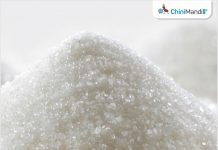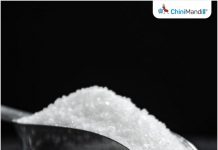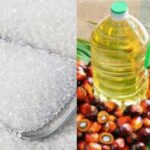ICE Raw sugar futures were higher on Tuesday. At the time of writing this update New York Sugar front month contract is trading at 17.93/lb with an appreciation of 0.48 points (+2.74%) whereas London White Sugar front month contract is trading at $474.90/tn with an appreciation of $11.80 (+2.53%)
On being asked why does sugar prices go up so sharply on the futures market in NY?
Mr. Arnaldo Luiz Correa – Risk Management Consultant & Director, at Archer Consulting explained, “This has been one of the most frequently asked questions in the last few weeks. Consensus has it that the market goes up because of the drought. The sugarcane crop failure we hear so much about varies depending on the source you go to for information. There are different kinds: from 5% to 30% reduction in sugarcane production in the Center-South, in comparison to the volume produced last year. We are talking about estimates ranging from 575 to 520 million tons of sugarcane.
There are other arguments, The new commodities boom as mainstay, the world inflation rate which looks for protection on the commodities markets, the expected post-pandemic world consumption boom and the spectacular growth in Chinese and Indian GDP, even if this increase is on smaller foundations. Does this analysis make sense?
He commented, “Time will tell, for sure. Well! The fact is that the sugar futures market goes up because of a more trivial reason: The hedgers (mills) are the ones who could provide more liquidity to aggressive buying of the funds; however, they are hedged by almost 90% for this crop that is starting. That is, the market goes up because there are no (more) sellers. If the funds speed up the buying – and based on CFTC data they are long by 240,000 lots – they will optimize the high trends because of a lack of sellers. This is a real danger that has nothing to do with the drought.
So, what pushes the prices up isn’t the drought, but the sellers (mills) not being able to take advantage of the high prices because they are already short/committed to the limit. The additional risk the drought can bring is that some mills might be faced with the harsh reality that they have fixed more export sugar than they will be able to produce/deliver due to the water deficit that hit their sugarcane fields.
The danger of an uncontrolled high trend on the futures market is made up of a combination of factors that still need validating, but they are perfectly feasible.
Here are three major ones:
a) The reduction in sugar production in some production units that can be forced to rebuy the hedge and/or renegotiate the delivery of the product for the next crop;
b) The average price of the sugar fixations for the 2021/2022 crop is 13.29 cents per pound, that is, more than 400 points below Friday’s market creating, according to our calculations, a margin call of approximately US$1.8 billion which were drained out of the trading companies, the financial institutions and the mills themselves; that is, if there is less money, there might be a short covering due to panic;
c) Hydrous is trading at 150 points of discount equivalent to NY sugar, which is about 250 points above the average level of fixation of the sugars of the mills. Is there a default risk here? Only time will tell.
Nevertheless, the fear of a lack of sugar on the physical would cause a spread race making the traders adjust their books by buying the nearby and selling the deferred until the perception of the lack of availability of the product faded.
But this didn’t happen, because July (17.47) is cheaper than October (17.54) and this is about the same price as March/2022.” Arnaldo further added.
How can such a mismatch heralded so much on the physical not resonate on the futures market?
It must be because the future is moving independently (speculative funds, systems, algorithms, among others). To be seen.
As much as the environment is loaded with this drought narrative, what the futures market shows doesn’t correspond to the perception on the physical. It seems to us the mills keep focusing their fixations on the 2022/2023 and 2023/2024 crops even if the top management is a little more anxious, or even reluctant, after the recent high trends in cents per pound. And that’s how it should be. We have been talking about it for ages.
For example, in August last year, when the fixation volume of the mills was only 26%, we advise our clients (in the exclusive reports they receive) to fix sugar linearly in NY in real per ton (it was at R$1,558), taking advantage of the excellent prices and, at the same time, buy at least 40% of the volume in calls at the exercise price of 14.00 cents per pound for March/2022, spending R$34 per ton (diluted in the 100% of the volume).
The value of these calls today is 376 points, which converted into real and diluted in the 100%, driving up the value of fixation to almost R$1,700 per ton. Alternatively, we also suggested the purchase of a call spread of 13.00/15.00 to 100% of the position. The cost was R$27 per ton, and today it would profit R$167 per ton, placing the fixation value at R$1,725. If the company had chosen to buy 100% in the first example, the fixation today would be R$2,000 per ton. These are two good examples of how the mills need to pay a lot of attention to how they manage their risks. Imagining they will have different results by doing the same thing all the time doesn’t look like a good strategy to us.
At the week’s closing in NY, the futures contract for July/2021 closed out at 17.47 cents per pound, appreciating almost 11 dollars per ton, but it represented a drop of R$23 per ton against the previous Friday. That was because the real appreciated against the dollar by about 4%. The other trading months along the curve which runs until March/2024 had positive numbers ranging from 9 to 17 dollars per ton, but also showed smaller values in real per ton.
Of course, we are not denying the drought. What we are trying to show is that there is a clear dichotomy between what the physical market players think about this year’s production and what the futures market is reflecting. Where will this lead us? That depends on the size of the pocket.
The fact that the non-index funds have reduced the long position is a breather for the market. Maybe the speculative drive fed by the mathematical models and algorithms will cool down and the funds will start taking profits on the position. In this case, who could absorb these sales?” He concluded.

















